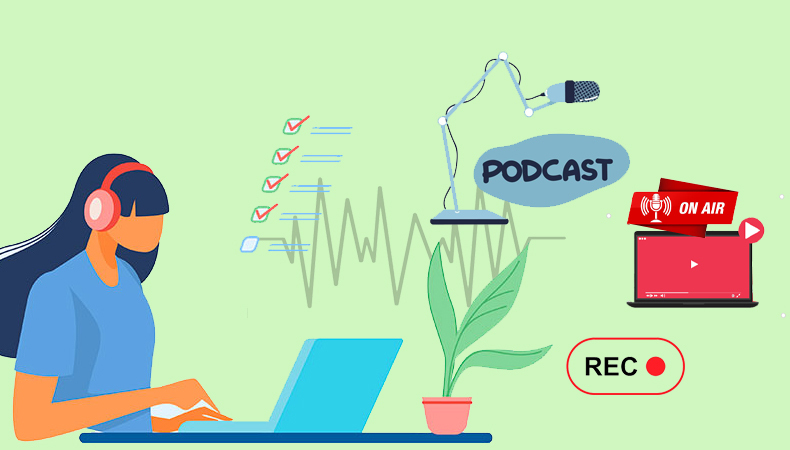Confused About Starting A Podcast On Youtube? See How Easily You Can Do It In 7 Steps

Everyone has a podcast these days, it is an effective medium through which one can deliver content to an audience. This is a good way to develop business and brand awareness. YouTube is an important platform on the web so many of you are searching for how to start a podcast on YouTube.
Before proceeding with the steps let us see what is a podcast on YouTube.
You know it well YouTube is not a podcast-hosting platform it is a video search engine. If you upload your podcast to YouTube, it will only be a YouTube channel.
If you just want to build a brand and upload content then you can proceed with YouTube channels but if you want to centralize to the podcasting space. You may want to list your episodes on podcasts platforms like Google Podcasts, Apple, or Spotify podcasts. Then you need to create a space to start podcasting to upload episodes.
Here are the steps for starting a podcast on YouTube-
1. Make a clear list of podcasting equipment
Before starting a YouTube podcast you must need to prepare a YouTube kit. In that kit add a good Microphone, HD camera, webcam, Laptop/PC, headphones, Recorder, Editing software, and Podcast hosting software. You can add a tripod, mic arm, audio mixture, and lighting kit to your kit.
2. Record your podcast
Prepare a podcast script before recording. Find a good-fit way to record audio and its output on your platform. If you are creating a video podcast keep in mind that video podcasting and, overlapping an image with audio are technically different works.
On YouTube, you will get three ways by which you can record a podcast.
I. Record Audio only
II. Using the Computer’s webcam record a Video podcase
III. Using an External camera to record Video Podcast
3. Edit the Podcast
Once you’ve chosen your recording method and recorded your podcast, the next big step is editing it. You cannot post a messy or incomplete podcast as it will tarnish your brand image. Therefore, it is important to thoroughly edit it before posting.
Transcribing, designing graphics, and breaking audio to micro levels are some key points that you should take care of during editing.
There are much of software like Adobe Audition, GarageBand, Audacity, and Reaper. Although, are available but you can use Riverside because it will let you edit your video content straight after recording. It will customize all your video needs.
4. Set the Media host
After perfect editing, you need to set up your media host and feed for going to publish the article.
If you have a podcast that is running then may you have the setup already but if do not have any podcasts before then you need to set this up.
In YouTube you cannot be the primary host provider, YouTube will be the primer. But after setting this on YouTube you can push and upload the same on various platforms. So, it is important to set up media hosting and feed before uploading a video to YouTube. Several sites can be hosted like Buzzsprout, Captivate, Podbean, etc.
5. Set the format of the Video
YouTube podcasters have many options for uploading content to its platform. Choose what you need from the description you get in this step. Like you will get the option of Live streaming your video, and Uploading the whole episode.
6. Creation of a YouTube Podcasting channel
If you have not created a YouTube account, then create one using your Gmail id and password. Then navigate to ‘Account settings’ and then create a channel. You will need to fill in some of the basic information in it. Once you are done, you can proceed to upload the videos.
7. Promote your work
Once you have uploaded your video then you can monetize the work of podcasting. You need to follow some more steps for it.Promotions can be done by promoting short clips instead of uploading the whole concept of your video. You can use SEO tools, collaborations, calls, share more, etc for more promotions. Sponsorships, advertising, and paid subscriptions are the ways of monetizing your podcasts.




